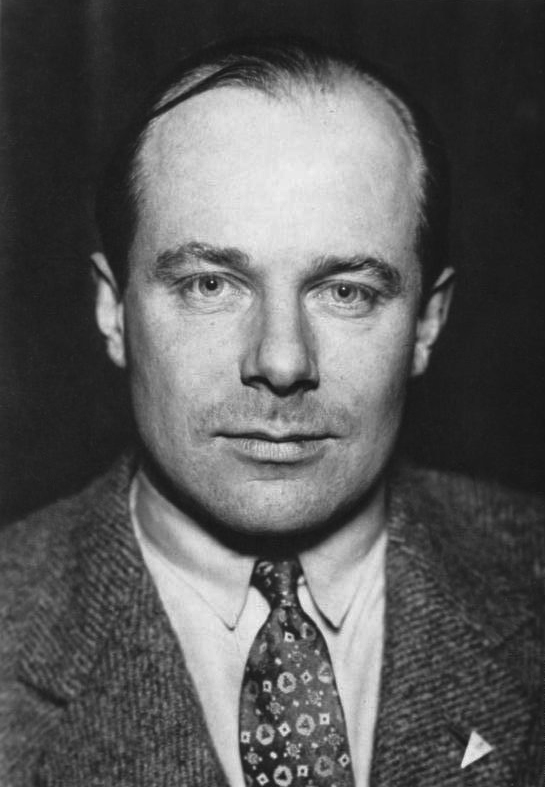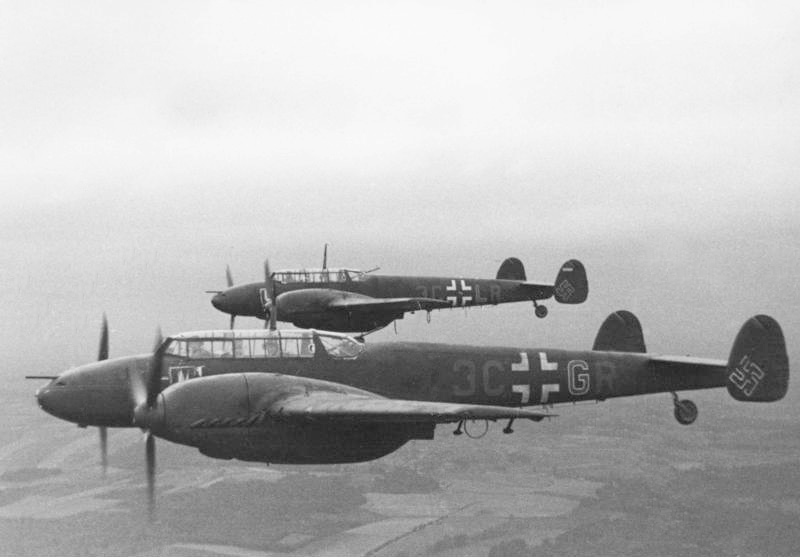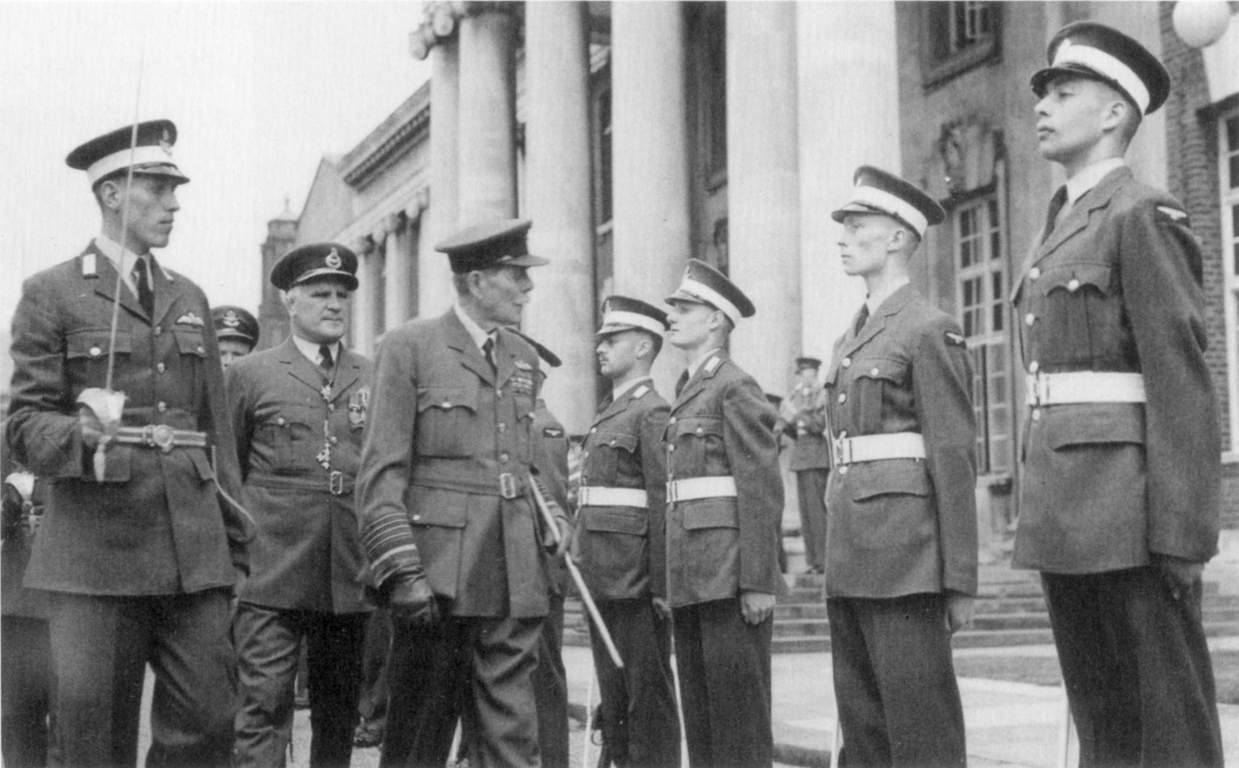|
Tom Neil
Thomas Francis "Ginger" Neil, (14 July 1920 – 11 July 2018) was a British aviator, fighter pilot and flying ace in the Royal Air Force. Neil flew during the Battle of Britain, and shot down 14 enemy aircraft during the Second World War. Early life Neil was born in Bootle, England, on 14 July 1920. He had a keen interest in aircraft as a child and also played cricket and football for local teams. His family moved to Manchester when he was 16, and he attended Eccles Secondary (grammar) School where he was awarded an art prize for a drawing of an aeroplane. After taking the School Certificate in 1937 he started work at the District Bank in Gorton while training to be a pilot with the Royal Air Force Volunteer Reserve (RAFVR). Neil had wanted to attend the Royal Air Force College Cranwell but his parents did not approve of his plan. RAF career Neil joined the RAFVR on 17 October 1938 at the age of 18 and was called up to full-time service at the outbreak of the Second World War. H ... [...More Info...] [...Related Items...] OR: [Wikipedia] [Google] [Baidu] |
Bootle
Bootle (pronounced ) is a town in the Metropolitan Borough of Sefton, Merseyside, England, which had a population of 51,394 in 2011; the wider Parliamentary constituency had a population of 98,449. Historically part of Lancashire, Bootle's proximity to the Irish Sea and the industrial city of Liverpool to the south saw it grow rapidly in the 1800s, first as a dormitory town for wealthy merchants, and then as a centre of commerce and industry in its own right following the arrival of the railway and the expansion of the docks and shipping industries. The subsequent population increase was fuelled heavily by Irish migration. The town was heavily damaged in World War II with air raids against the port and other industrial targets. Post-war economic success in the 1950s and 1960s gave way to a downturn, precipitated by a reduction in the significance of Liverpool Docks internationally, and changing levels of industrialisation, coupled with the development of modern suburbs ... [...More Info...] [...Related Items...] OR: [Wikipedia] [Google] [Baidu] |
School Certificate (UK)
The United Kingdom School Certificate was an educational attainment standard qualification, established in 1918 by the Secondary Schools Examinations Council (SSEC). The School Certificate Examination (often called the "Junior Certificate" or "Juniors") was usually taken at age 16. Performance in each subject was graded as: Fail, Pass, Credit or Distinction. Students had to gain six passes, including English and Mathematics, to obtain a certificate. To obtain a "matriculation exemption" one had to obtain at least a credit in five subjects, including English, Mathematics, Science and a language. Those who failed could retake the examination. Some students who passed then stayed on at school to take the Higher School Certificate (often called the "Senior Certificate" or "Seniors") at age 18. The School Certificate was abolished after the GCE O-Level was introduced in 1951. The School Certificate also existed in a number of Commonwealth countries such as Australia and Singapore ... [...More Info...] [...Related Items...] OR: [Wikipedia] [Google] [Baidu] |
Junkers Ju 87
The Junkers Ju 87 or Stuka (from ''Sturzkampfflugzeug'', "dive bomber") was a German dive bomber and ground-attack aircraft. Designed by Hermann Pohlmann, it first flew in 1935. The Ju 87 made its combat debut in 1937 with the Luftwaffe's Condor Legion during the Spanish Civil War of 1936–1939 and served the Axis in World War II from beginning to end (1939–1945). The aircraft is easily recognisable by its inverted gull wings and fixed spatted undercarriage. Upon the leading edges of its faired main gear legs were mounted ram-air sirens known as ', which became a propaganda symbol of German air power and of the so-called ''Blitzkrieg'' victories of 1939–1942, as well as providing Stuka pilots with audible feedback as to speed. The Stuka's design included several innovations, including automatic pull-up dive brakes under both wings to ensure that the aircraft recovered from its attack dive even if the pilot blacked out from the high g-forces. The Ju 87 operated with c ... [...More Info...] [...Related Items...] OR: [Wikipedia] [Google] [Baidu] |
Messerschmitt Bf 110
The Messerschmitt Bf 110, often known unofficially as the Me 110,Because it was built before ''Bayerische Flugzeugwerke'' became Messerschmitt AG in July 1938, the Bf 110 was never officially given the designation Me 110. is a twin-engine (Destroyer, heavy fighter), fighter-bomber (''Jagdbomber'' or ''Jabo''), and night fighter (''Nachtjäger'') developed in Nazi Germany in the 1930s and used by the Luftwaffe during World War II. Hermann Göring was a proponent of the Bf 110, believing its heavy armament, speed, and range would make the Bf 110 the Luftwaffe’s premier offensive fighter. Early variants were armed with two MG FF 20 mm cannon, four 7.92 mm (.312 in) MG 17 machine guns, and one 7.92 mm (.312 in) MG 15 machine gun for defence (later variants would replace the MG FFs with MG 151s and the rear gunner station would be armed with the twin-barreled MG 81Z). Development work on an improved type to replace the Bf 110 - the Messerschmitt Me 210 - began ... [...More Info...] [...Related Items...] OR: [Wikipedia] [Google] [Baidu] |
Heinkel He 111
The Heinkel He 111 is a German airliner and bomber designed by Siegfried and Walter Günter at Heinkel Flugzeugwerke in 1934. Through development, it was described as a " wolf in sheep's clothing". Due to restrictions placed on Germany after the First World War prohibiting bombers, it was presented solely as a civil airliner, although from conception the design was intended to provide the nascent Luftwaffe with a heavy bomber. Perhaps the best-recognised German bomber of World War II due to the distinctive, extensively glazed "greenhouse" nose of the later versions, the Heinkel He 111 was the most numerous Luftwaffe bomber during the early stages of the war. It fared well until it met serious fighter opposition during the Battle of Britain, when its defensive armament was found to be inadequate. As the war progressed, the He 111 was used in a wide variety of roles on every front in the European theatre. It was used as a strategic bomber during the Battle of Britain, a torpedo ... [...More Info...] [...Related Items...] OR: [Wikipedia] [Google] [Baidu] |
Messerschmitt Bf 109
The Messerschmitt Bf 109 is a German World War II fighter aircraft that was, along with the Focke-Wulf Fw 190, the backbone of the Luftwaffe's fighter force. The Bf 109 first saw operational service in 1937 during the Spanish Civil War and was still in service at the end of World War II in 1945. It was one of the most advanced fighters when it first appeared, with an all-metal monocoque construction, a closed canopy, and retractable landing gear. It was powered by a liquid-cooled, inverted-V12 aero engine. It was called the Me 109 by Allied aircrew and some German aces, even though this was not the official German designation. It was designed by Willy Messerschmitt and Robert Lusser who worked at Bayerische Flugzeugwerke during the early to mid-1930s. It was conceived as an interceptor, although later models were developed to fulfill multiple tasks, serving as bomber escort, fighter-bomber, day-, night-, all-weather fighter, ground-attack aircraft, and reconnaissan ... [...More Info...] [...Related Items...] OR: [Wikipedia] [Google] [Baidu] |
George Palliser
George Charles Calder "Tich" Palliser, (11 January 1919 – 24 September 2011) was a Royal Air Force fighter pilot and flying ace of the Second World War. Palliser flew during the Battle of Britain and, at the time of his death, was one of the last survivors of " The Few". Early life Born in West Hartlepool on 11 January 1919, Palliser was educated at Brougham School and later attended a Technical School. RAF career Palliser joined the Royal Air Force Volunteer Reserve in 1939 as an airman under training as a pilot. He was called up to full-time service, at the rank of sergeant pilot at the outbreak of war, and was posted to No. 3 ITW Hasting, moved to No. 11 EFTS Perth on 5 Dec 1939 and went to No. 6 Flying Training School at RAF Little Rissington in April 1940. Pallister converted to Hurricanes at No. 6 Operational Training Unit at RAF Sutton Bridge in July 1940 and joined No. 17 Squadron RAF at RAF Debden on 3 August 1940 during the Battle of Britain. He moved to No. 43 S ... [...More Info...] [...Related Items...] OR: [Wikipedia] [Google] [Baidu] |
RAF North Weald
North Weald Airfield is an operational general aviation aerodrome, in the civil parish of North Weald Bassett in Epping Forest, Essex, England. It was an important fighter station during the Battle of Britain, when it was known as the RAF Station RAF North Weald. It is the home of North Weald Airfield Museum. It is home to many private aircraft and historic types, Essex & Herts Air Ambulance helicopter and is an active flight training airfield. History Royal Flying Corps Station North Weald Bassett aerodrome was established in the summer of 1916 during the First World War by the Royal Flying Corps. Later it became Royal Air Force with effect from Monday 1 April 1918. Its military functions continued to develop during the interwar period, with the building of large hangars and accommodation for Royal Air Force (RAF) personnel. The airfield played an important part in the air defence strategy of the United Kingdom during the Second World War. Initially Hawker Hurricanes were de ... [...More Info...] [...Related Items...] OR: [Wikipedia] [Google] [Baidu] |
Hawker Hurricane
The Hawker Hurricane is a British single-seat fighter aircraft of the 1930s–40s which was designed and predominantly built by Hawker Aircraft Ltd. for service with the Royal Air Force (RAF). It was overshadowed in the public consciousness by the Supermarine Spitfire during the Battle of Britain in 1940, but the Hurricane inflicted 60 percent of the losses sustained by the Luftwaffe in the campaign, and fought in all the major theatres of the Second World War. The Hurricane originated from discussions between RAF officials and aircraft designer Sir Sydney Camm about a proposed monoplane derivative of the Hawker Fury biplane in the early 1930s. Despite an institutional preference for biplanes and lack of interest by the Air Ministry, Hawker refined their monoplane proposal, incorporating several innovations which became critical to wartime fighter aircraft, including retractable landing gear and the more powerful Rolls-Royce Merlin engine. The Air Ministry ordered Hawk ... [...More Info...] [...Related Items...] OR: [Wikipedia] [Google] [Baidu] |
RAF Church Fenton
Royal Air Force Church Fenton or RAF Church Fenton was a former Royal Air Force (RAF) station located south east of Tadcaster, North Yorkshire, England and north west of Selby, North Yorkshire, near the village of Church Fenton. The station was opened in 1937 and during the Second World War was home to air defence aircraft, a role retained by the station until the 1960s when it became a training station. It closed in 2013 and is now a civilian airfield known as Leeds East Airport. History Prewar Plans for a new airfield adjacent to the village of Church Fenton were announced in June 1935, it was subject to protest from the local population particularly concerning the waste of valuable farming land and was close to an existing airfield away at Sherburn. Despite the protests construction started in early 1936 on the site, a mixture of private and West Riding County Council-owned farm land. On 1 April 1937 the station was declared open and on 19 April the first ... [...More Info...] [...Related Items...] OR: [Wikipedia] [Google] [Baidu] |
Pilot Officer
Pilot officer (Plt Off officially in the RAF; in the RAAF and RNZAF; formerly P/O in all services, and still often used in the RAF) is the lowest commissioned rank in the Royal Air Force and the air forces of many other Commonwealth countries. It ranks immediately below flying officer. It has a NATO ranking code of OF-1 and is equivalent to a second lieutenant in the British Army or the Royal Marines. The Royal Navy has no exact equivalent rank, and a pilot officer is senior to a Royal Navy midshipman and junior to a Royal Navy sub-lieutenant. In the Australian Armed Forces, the rank of pilot officer is equivalent to acting sub lieutenant in the Royal Australian Navy. The equivalent rank in the Women's Auxiliary Air Force (WAAF) was "assistant section officer". Origins In the Royal Flying Corps, officers were designated pilot officers at the end of pilot training. As they retained their commissions in their customary ranks (usually second lieutenant or lieutenant), an ... [...More Info...] [...Related Items...] OR: [Wikipedia] [Google] [Baidu] |
Royal Air Force College Cranwell
The Royal Air Force College (RAFC) is the Royal Air Force military academy which provides initial training to all RAF personnel who are preparing to become commissioned officers. The College also provides initial training to aircrew cadets and is responsible for all RAF recruiting along with officer and aircrew selection. Originally established as a naval aviation training centre during World War I, the College was established as the world's first air academy in 1919. During World War II, the College was closed and its facilities were used as a flying training school. Reopening after the War, the College absorbed the Royal Air Force Technical College in 1966. The Royal Air Force College is based at RAF Cranwell near Sleaford in Lincolnshire, and is sometimes titled as the Royal Air Force College Cranwell. History Early years In December 1915, after the Royal Naval Air Service had broken away from the Royal Flying Corps, Commodore Godfrey Paine was sent to Cranwell to start a ... [...More Info...] [...Related Items...] OR: [Wikipedia] [Google] [Baidu] |







